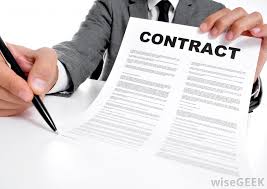The Most Important Information Every Lease Agreement Should Have
The agreement between landlords and their tenants for the rental of property is called the lease agreement. In this contract, all the important information about the responsibilities of tenants as well as that of a landlord is included and the consequences of that will happen if any party breaks these obligations. Listed below are basic areas of the lease agreement.
#1. The Involved Parties
This clause provides details on the exact legal identities of the parties to the agreement i.e, the landlord and tenants.
#2. The Lease Term
The lease term and conditions for renewal will need to be stated clearly in the contract.
#3. The Property Address
The precise location of the property which the tenant seeks to rent.
#4. The Landlord’s agent
It should be stated if the landlord has approved someone to act on his or her behalf. The individual could be a property manager or even a relative.
#5. The utilities
The utilities that are part of the rent should be stated along with the utilities the tenants are accountable for.
#6. The Use of Property
In this area of the contract, the use of the property should be specified, along with the names of all the renters that will be living in the property, and a warning against the use of illegal substances on it.
#7. The monthly rent
This includes the amount to be paid on a monthly basis and the relevant due dates.
#8. The amount of security deposit
In this section of the contract, the amount of money the tenant must give as security deposit should be specified. This is done in case the tenant breaks any part of the lease agreement. Information on how the deposited will be stored during the tenant’s occupancy should also be included.
#9. Terms for eviction
The reasons why a landlord can file an eviction will be stated and this also includes what the tenant will be accountable for if they are evicted.
#10. Pet Policy
The landlord’s pet policy will list the type of pets that are allowed, as well as the consequences for harm and trouble caused by the pet.
#11. Quiet Enjoyment
The tenant must obey the quiet hours policy of the property, if there is one. The punishment for breaking this policy should be listed.
#12. The parking policy
The agreement for parking cars at the building should be listed out here. The number of parking spots that the tenant is permitted to use will be stated, including any extra fees for renting a parking spot.
#13. The compliance with laws
The landlord must agree to adhere to all laws both local and national.
#14. The care of the unit
In this area, the tenant has carefully examined the property and is content with its current condition. During the occupancy, the tenant must keep the property in this condition, with some allowance for wear and tear. It’s the tenants responsibility to pay for any damage caused to the property. The tenant must also consult the landlord before rendering any changes to the property.
#15. Renewal/Changes
State the terms at which the contract can be renewed. If any alterations are to be made to the lease agreement, the landlord would have to notify the tenant a month before the present lease agreement ends. The tenant can choose either to renew the agreement or to move out. If no changes are made, the tenant could still renew the contract for another year or two.
#16. The Validity of Lease
If it happens that there is a legal flaw in the lease, the rest of the lease in still effective provided a clause is inserted to that effect.
#17. Insurance
It’s the tenant responsibility to purchase renter’s insurance. The landlord’s dwelling insurance does not cover a tenant’s assets. Landlords are by no means accountable for any damage or loss to the tenant’s property.





